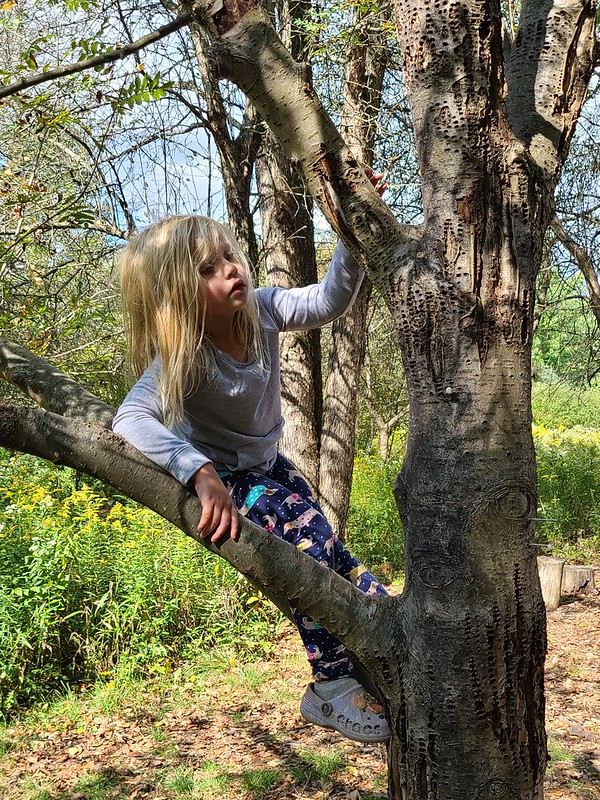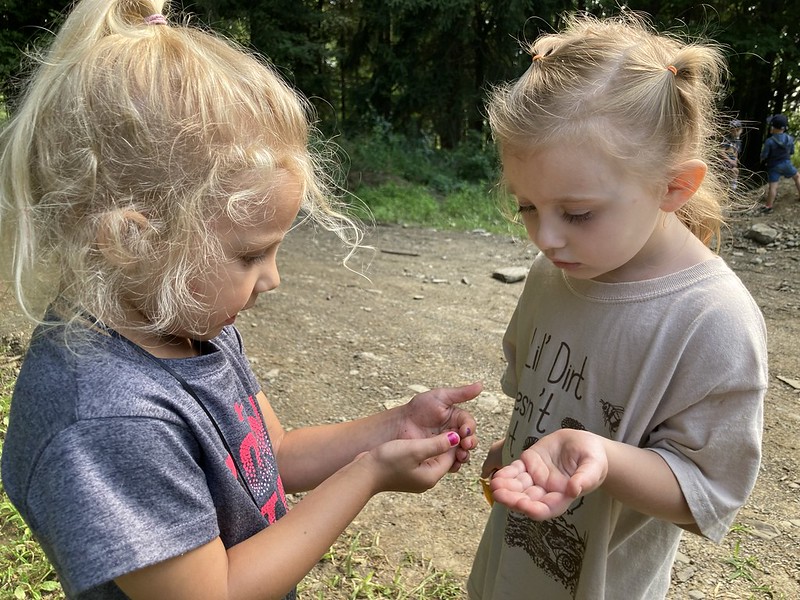I was just talking to a friend, newly a fourth-grade teacher, who was recounting a question from one of her students: “Why are we asking all of these questions if you aren’t going to give us the answer?” he said, in reaction to their question board. She thought “There it is, the starting point.” With a naturalist and scientist background, asking questions is the essential catalyst of learning. I can’t wait to see what she does in the classroom.

When you’re out in the woods, and you see a plant you don’t recognize, no one is there to answer your questions: What is it? What is it related to? Where did it come from? Can I eat it? Is it medicinal? Is it native? All those questions are unanswered, captured in a nature journal, perhaps, along with a sketch and a pressed leaf; or maybe a quick snapshot on the camera roll of the phone. Questions to be answered later, with research. Questions that may lead to more questions. Perhaps questions that will never be answered.
The journey of learning takes so many forms. Trying and failing. Reading and doing. Watching and trying. Thinking, coming up with a plan, executing it, and either succeeding or trying again. Learning happens all the time, if the mind is willing, and the environment is conducive. It isn’t always. Sometimes our brains just can’t handle it. Sometimes the situation makes it impossible to learn. But the opportunity is there, and it will often come around again.
The natural world is a great place to learn about everything from plant structure to life cycles to how water flows. Playing in mud puddles and sandboxes teaches about water flow, erosion, current, and durability of materials. This activity in childhood might inform the future hydrologist, engineer, or conservationist. Even when building a new road or a new house, those skills learned as a child come into play… how water moves, what it carries, how to slow it down, calm it down, so it doesn’t take the hillside out as the rain runs rampant toward the creek.
Strength of different types, thicknesses, and age of tree limbs is one of the more painful, and fastest learned lesson. You only grab a skinny, dead limb once. You only stand on a too-thin live branch once. You only swing on the grapevine once before testing its grip on the canopy. These lessons in childhood teach the toughness of angles, relation of diameter to strength in lumber, and leverage, as the limb you walk on bends as you get farther out. This feeds the mind of the young builder, carpenter, forester, furniture maker and gives the necessary knowledge to create.

The acorns collected and filling pockets, piled into mountains, or buried as treasure are also lessons. The old ones crack, don’t grow after being worn smooth by fingertips in a pocket all winter. Acorn mountains attract animals who feast on the bounty, though some are left behind – how do the animals know which have weevils in them? The buried treasure sends up a mass of shoots a few seasons later, all reaching for the sky, sunlight, in a race to see which will be the next producer of precious acorns. This collection and play and observation helps nurture the gardener, the forester, the orchardist, the plant breeder, the future savior of the ash, American Chestnut, Eastern Hemlock, American Beech.
All of it starts with play and exploration. It is followed by an observation that sparks a question. Why did the water break through there? Why does this tree branch hold my weight but that one doesn’t? Why do those acorns always get eaten before the ones over there? And then the wondering… and then asking more questions, testing, trying out an idea and being wrong.
Learning, though, still. Trying again and answering the question, but having new ones take its place.
It is good for the brain, you know. Asking questions. Hard ones. Ones you don’t have the answers to. Share your questions with a friend. They may have knowledge that helps, or they may have even more questions that deepen the mystery. Together maybe you’ll figure it out. Or maybe not. But you’ll learn as you try to find the answer. And in that asking, and wondering, and sharing, and learning, you’ve created a friendship, knowledge, and a great story. There are others that might be asking similar questions. Join them and you’ve created a community, where together you can protect forests, teach the next generation, find a new energy source, pull a species back from the edge of extinction, or give a voice to something that doesn’t have one. All this, from an acorn. From a plant you didn’t recognize. From asking a question that the teacher didn’t answer.
Nature is a good teacher. Find a friend and go for a walk (without Google). Audubon’s trails are open dawn to dusk and getting prettier by the day as autumn takes hold. Ask questions. Be in awe of what you don’t know. And then look for answers. You’ll enjoy the journey.
Audubon Community Nature Center builds and nurtures connections between people and nature. ACNC is located just east of Route 62 between Warren and Jamestown. The trails are open from dawn to dusk as is Liberty, the Bald Eagle. The Nature Center is open from 10 a.m. until 4:30 p.m. daily except Sunday when it opens at 1 p.m. More information can be found online at auduboncnc.org or by calling (716) 569-2345.
Sarah Hatfield is Education Coordinator at ACNC.


Recent Comments